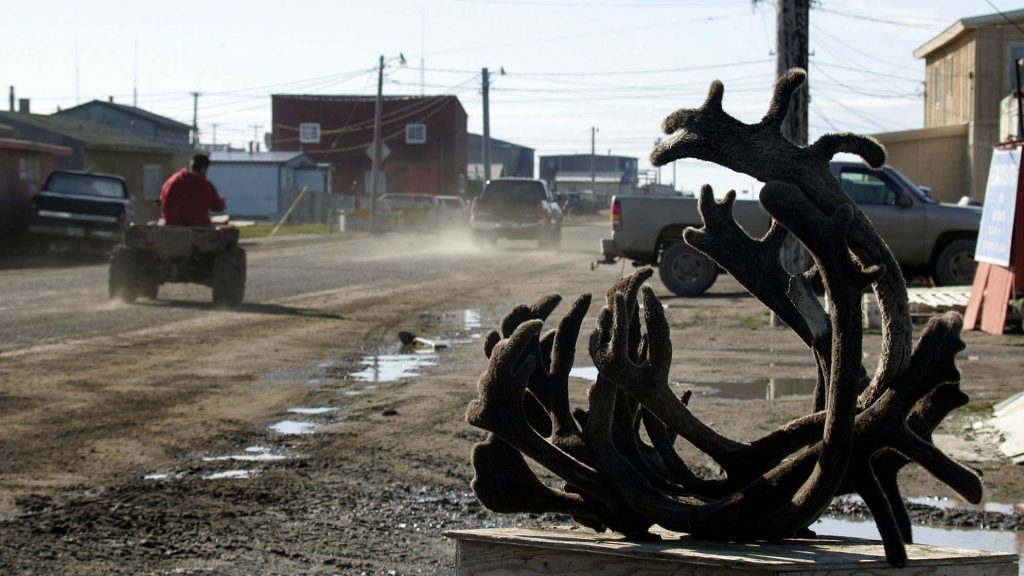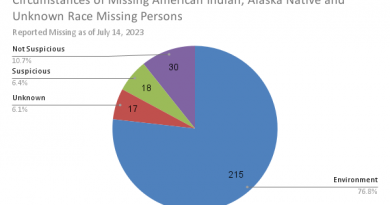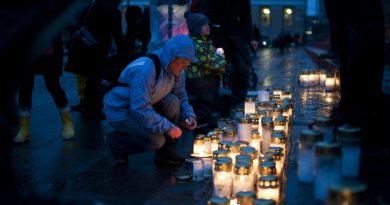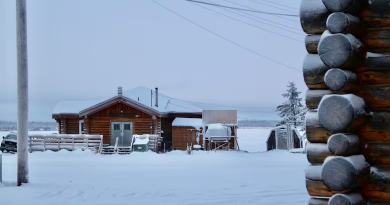Blog: 2023, yet another “last chance” for the climate?

Why 2023 will be another key year for the future of our climate.
I am looking out onto a sparkling white landscape, glittering frosted trees, a stunning blue winter sky in a rare white December here in the mild Rhineland of western Germany. A welcome, seasonal freeze-up after a summer that was hot – and way too dry. It would be all too easy to give way to the illusion that things are as they always were – or at least as they used to be in our memories. When the seasons were set in their ways and the winter in our part of the globe was cold and frosty. And climate change had not become a topic of everyday conversation – and a crisis threatening our future.
If only. People up in the high north of our planet will be having different thoughts this winter. At the beginning of December, the temperature in Utqiagvik, Alaska’s northernmost community (formerly known as Barrow), hit 4.4 degrees Celsius (40 degrees Fahrenheit). This is the warmest that region has seen on record from late October to late April, according to Rick Thoman, a climate specialist at the International Arctic Research Center at the University of Alaska Fairbanks, talking to AP News.
Yesterday, #Utqiagvik smashed its December and winter high temperature records, with a high of 40°F (+4.4°C). The normal daily high temperature for December 5 is 2.2°F (-16.6°C). The previous latest 40F high occurred on October 29, 2016. The earliest was April 23, 1931. #akwx pic.twitter.com/yEYVP5wevp
— Don Sutherland (@DonSuth89069583) December 6, 2022
The first weekend in December, the Arctic as a whole averaged 6.4 degrees Celsius (11.5 degrees F.) warmer than the 1979-2000 average temperature.
Greenland also experienced summer temperatures in December.
This “freak” warmth is actually in line with a trend:
Most of the #Arctic is experiencing warming temperatures over the last four decades in December. This is even larger over areas with a loss of sea ice cover, such as the Barents Sea region.
[Data from @CopernicusECMWF ERA5. For more info: https://t.co/ncpuSNu5nz] pic.twitter.com/r5yPL4LpfI— Zack Labe (@ZLabe) December 13, 2022
This year’s Arctic Report Card, issued annually at this time by NOAA since 2006, confirms the transformation of our icy northern regions as the new normal:
“Shifting seasons and climate-driven disturbances, such as wildfires, extreme weather, and unusual wildlife mortality events, are becoming increasingly difficult to assess within the context of what has been previously considered normal”, the experts write.
Finally, here is a visualization showing the shocking transformation of the #Arctic into its new state (https://t.co/sBISihq9SS). pic.twitter.com/adGjCJSYJv
— Zack Labe (@ZLabe) December 14, 2022
The Report Card looks at the current state of different components of the Arctic environmental system relative to historical records.
The whole planet is heating up
Carbon Brief recently published its latest quarterly “state of the climate” analysis by Dr. Zeke Hausfather. He concluded that “2022 is on track to be somewhere between the fourth and sixth warmest year on record”.
This year has been one of extremes, featuring record-shattering summer heatwaves and devastating floods. Western Europe and parts of Asia have had their warmest year on record so far (from January through October), Hausfather writes. The high global average temperature for 2022 occurred despite persistent La Niña conditions in the tropical Pacific, which are having a cooling influence on global temperatures.
Although it does not set a new global temperature record, 2022 will still be one of the warmest years since records began in the late 1800s. Carbon Brief says temperatures will end up around the level expected by climate models and are consistent with the long-term warming trend over the past 50 years.
Greenhouse gas concentrations reached a new high in 2022. That means our human emissions from fossil fuels, land-use change and agriculture have increased atmospheric concentrations of CO2, methane and nitrous oxide to their highest levels in at least a few million years – if not longer, concludes Carbon Brief.
Nearly all of western Europe and large areas of China experienced their warmest January-October period ever recorded. The same is true of Iran, Afghanistan, Pakistan, Nepal and the Antarctic Peninsula. In Pakistan, these record-warm temperatures have been accompanied by catastrophic flooding that affected more than 33 million people, destroyed 1.7 million homes, and led to nearly 1,400 deaths, writes Hausfather.
Antarctic sea ice extent set new record lows during both spring and summer. Arctic sea ice remained at the low end of the historical range.
COP27 – another conference that didn’t save the world
In contrast to the increasingly visible urgency of the need to reduce emissions, this year’s UN climate conference in Sharm el-Sheikh in Egypt did little to move things on. There was one major – and long overdue – positive outcome. Developing countries finally secured a new fund for “loss and damage” resulting from climate change. Small island states and other vulnerable nations had been fighting for this for decades. Back in Copenhagen in 2009 the industrialised countries promised to mobilize 100 billion US dollars a year from 2020 on in financial support for climate protection and adaptation measures in the developing world. That promise was not kept. Against that background, the agreement can be considered a breakthrough. However, decisions on actual amounts and which countries will actually be paying into the fund were put off until COP28 – to be held in Dubai.
COP27: Key outcomes agreed at the UN climate talks in Sharm el-Sheikh | @aruna_sekhar @daisydunnesci @Josh_Gabbatiss @joejgoodman @DrSimEvans @zhangzizhu527 #COP27 #AfricaCOP27
Read: https://t.co/P4mi7Wjxsx pic.twitter.com/Zn87pu6h3f
— Carbon Brief (@CarbonBrief) December 15, 2022
This was the first COP after the publication of the latest reports by all three IPCC working groups. These underlined once more the urgent need for the world’s decision-makers to prioritize climate action. But aside from that milestone on the path towards helping developing countries that have become victims of climate change, the Sharm el-Sheikh meeting made no progress on scaling up efforts to make the drastic cuts to emissions that we need to tackle the climate emergency.
“Together for just, ambitious implementation” was the motto. The COP was supposed to negotiate how the Paris Agreement is to be put into action. In fact the outcome did little to advance efforts to stay below 1.5C, beyond what was agreed at COP26 in Glasgow last year.
Dr. Oliver Geden, Senior Fellow of the German Institute for International and Security Affairs (SWP) told journalists after the conference there had been no progress in the year since the Glasgow event. Since global emissions are still not dropping, it will be virtually impossible to avoid crossing the 1.5C line.
One of the key promises of the Paris Agreement was for a “global stocktake” every five years to close the gap between national pledges and global goals. The gap will not be closed in the foreseseeable future, says Geden. The gap is already huge and global emissions would have to drop by 25 percent by 2030 to keep under 2C, 45 percent to keep under 1.5C.
In Glasgow in 2020, the participating countries reluctantly agreed to reduce the burning of coal. The Sharm el-Sheik declaration confirmed that, but went no further. In fact, the latest figures from the IAE show that more coal was burned in 2022 than ever before.
Shamefully, the “Sharm el-Sheikh implementation plan” excluded any mention of winding down the use of fossil fuels. As Professor Niklas Höhne, head of the Cologne-based New Climate Institute puts it, the 1.5 limit is “still in intensive care with its condition deteriorating”. The last year was wasted:
“In the shadow of the energy crisis, we failed to shift into emergency mode. There was not even agreement on the most obvious: that all fossil energies would have to be phased out, not just coal.”
Höhne is a major critic of support for a new gas infrastructure, which will make it much harder to halve global emissions by 2030 to keep to the 1.5C limit.
📢Proposed @KfW draft 📑 for🛢️+ gas projects (rumoured to be up for decision today) violate #ParisAgreement. Our earlier blog explains why investments in gas abroad are generally misaligned. Blog 👉 https://t.co/WjJIG8jCMy Some more thoughts on why the 📑 are problematic:🧵👇
— NewClimate Institute (@newclimateinst) December 15, 2022
COP27 was dominated by resistance from several key players seeking to defend their own interests at the cost of global climate action. China is determined to hold onto its membership of the G77 group of developing and emerging countries, to avoid paying into international “pots”, and stay, instead amongst the recipients of any funding available. The EU and USA want China, whose per capita emissions are already higher than those of the EU, to lose its status as a developing nation.
The big oil and gas producing economies lobbied to stop a recommendation to end coal burning and a joint declaration for a shift away from oil and gas.
Meanwhile Brazil, still controlled by the Bolsonaro administration, blocked moves to agree rules on landscape and biodiversity protection.
“In spite of the increasingly visible effects of climate change, too many countries are still unwilling to accept their responsibility for a rapid reduction of greenhouse gas emissions, “Professor Manfred Fischedick, President of the renowned Wuppertal Institute told the Science Media Centre.
Yet especially with regard to the most vulnerable countries – and to slow the increase in the number and intensity of extreme weather situations here at home – every tenth of a degree less of warming counts, says Fischedick.
Any good news?
I find it difficult to be optimistic under the present circumstances. Here in Germany, with the Green Party in the coalition government, the energy crisis caused by the Russian war on Ukraine has resulted in major investment in the gas infrastructure. It is to be hoped the revival of fossil fuels we are seeing now will be short-lived. But how much damage will it do before renewables are in place to supply the world’s energy needs?
The International Energy Agency (IEA) has a more positive take on developments in its recently published annual report on renewable energy. It says the global energy crisis is “pushing the accelerator on renewable energy expansion”, particularly in the EU, US, China and India. It concludes that utility-scale solar and onshore wind power are now the cheapest options for new generation in “a significant majority of countries worldwide”.
The @IEA estimates the world will add as much renewable power in the next 5 years as it did in the past 20.
This is 30% more than what was forecast by the IEA just a year ago.
Via @FThttps://t.co/YMsjCyxkdx pic.twitter.com/5LRgqDykSr
— Ember (@EmberClimate) December 13, 2022
In what it calls its “largest ever upward revision” for the sector, the Paris-based organisation raised its global forecast for renewables growth by nearly 30% compared with last year. This amounts to a 76% boost since 2020, Carbon Brief analysis finds.
The IEA now expects renewables to surpass coal as the world’s largest source of electricity generation by “early 2025”, reaching 38% of the power mix by 2027. The installed capacity of solar power alone is set to overtake that of coal in 2027.
But, despite all this, the IEA says countries are still not on track to achieve a net-zero emissions energy system by 2050.
Climate Action Tracker Ratings https://t.co/9b0BQo5tVx
— Weekly Filet (@weeklyfilet) December 15, 2022
The latest estimate from Climate Action Tracker shows that only Gambia is in line with the 1.5C limit. No major emitter fits the bill.
Three groups – @UNEP, @climateactiontr, and @IEA –provide annual updates on where we are likely headed under both policies in place today and under future commitments.
Here are their latest (Nov 2022) estimates compared to the five SSP scenarios in the recent IPCC report: pic.twitter.com/QBfo8bkgey
— Zeke Hausfather (@hausfath) November 12, 2022
It is not that there is no good news on the climate front.
In world first, EU strikes deal to impose carbon border taxes on imports of polluting goods
This is big and will accelerate decarbonization: industries everywhere will need to be powered with green electrons to export competitively to the EU https://t.co/IaJ5c7pwHl #climate
— Assaad Razzouk (@AssaadRazzouk) December 14, 2022
The EU has agreed to impose a carbon dioxide emissions tariff on imports of polluting goods such as steel and cement. This is the world’s first scheme of its kind, designed to support European industries as they decarbonise. It will also include fertilisers, aluminium and electricity.
Assaad Razouk, author of Saving the Planet Without the Bullshit and the ‘Angry Clean Energy Guy’ podcast provides regular updates on positive developments:
Good climate news this week
1 EU to impose carbon border taxes
2 China to curb methane emissions
3 Tokyo in mandatory new solar for buildings
4 JB Straubel in $3.5b new green battery recycling plant
5 HSBC stops funding new oil and gas
6 Pemex to invest $12b to reduce emissions https://t.co/9o4upVGdi4— Assaad Razzouk (@AssaadRazzouk) December 19, 2022
“No More Fairy Tales” is a collection of “Positive-Outcome, Climate-Fiction Short Stories”.
We can still avert climate catastrophe
We do have the wherewithal to abandon fossil fuels and decarbonise our societies:
Getting a lot of q’s about what today’s nuclear fusion breakthrough means for climate. My answer is: not much. We already have the technologies we need to decarbonise 80% of the electricity sector by 2030 even as demand soars due to electrification: https://t.co/ufVTBQGSBc
— Prof. Katharine Hayhoe (@KHayhoe) December 12, 2022
The global biodiversity COP15 ended in Montreal with a ground-breaking agreement to protect 30 percent of the planet. It is far from perfect and leaves many environment groups dissatisfied. What worries me too, though, is that people are talking about it as a “Paris Agreement” for biodiversity. Sure, the Paris Agreement was a major breakthrough, but the best of treaties is worthless if they are not implemented. And looking at the state of the climate today …
We have to radically change our lifestyles and economies in the interests of the climate and biodiversity – which are, of course, intrinsically linked.
In a study published in Nature on December 12th, Jason Hickel, Giorgos Kallis, Diana Urge-Vorsatz, Julia Steinberger and their fellow authors argue the case for degrowth.
Our newest @Nature commentary on how “Degrowth can work — here’s how science can help”
with @jasonhickel @g_kallis @JKSteinbergerWealthy countries can create prosperity while using less materials &energy if they abandon economic growth as an objectivehttps://t.co/m17zJSUZqV
— Diana Urge-Vorsatz (@DianaUrge) December 12, 2022
“Reports this year by the Intergovernmental Panel on Climate Change (IPCC) and the Intergovernmental Science-Policy Platform on Biodiversity and Ecosystem Services (IPBES) suggest that degrowth policies should be considered in the fight against climate breakdown and biodiversity loss, respectively”, they write. The measures they discuss include “scaling down destructive sectors such as fossil fuels, mass-produced meat and dairy, fast fashion, advertising, cars and aviation, including private jets. At the same time, there is a need to end the planned obsolescence of products, lengthen their lifespans and reduce the purchasing power of the rich.”
The degrowth strategy would also include improving public services, introducing a green jobs guarantee, reducing working time and enabling sustainable development.
“In our view”, the authors conclude, the question is no longer whether growth will run into limits, but rather how we can enable societies to prosper without growth, to ensure a just and ecological future.”

Zeke Hausfather, the climate scientist and energy systems analyst I quoted earlier, told Foresight in an interview:
“The future doesn’t boil down to either a 1.5 degree Celsius future or an apocalyptic hellscape. Climate change is ultimately a matter of degrees rather than thresholds […] The single most important thing we can do is to take as rapid action as possible to reduce emissions.” For that, people have to become pro-active in tackling the climate problem:
“We should take more time to discuss how people can get involved in the solutions. And I don’t just mean buying electric cars or alternative diets. I’m talking about voting, organizing politically, reaching out to decision-makers and getting out on the streets. This aspect is absent in a lot of public discussions which tend to focus on the global impacts of climate change. We need people to mobilize and become politically active.“
Here in Germany, the “Last Generation” group of climate activists has attracted widespread public attention with protests involving glueing themselves to roads and airport runways. The group aims to fight climate change and move the government to take stronger action by generating public outrage through civil disobedience. They are facing a lot of criticism – and tough legal action, including imprisonment. But ultimately, as the movement sees itself, this is the “last generation” with the ability to halt the climate crisis and “correct our past mistakes”.
“We have an obligation to act now, not only for ourselves but for all the generations to come”, says the mission statement.
Not everybody is willing to glue themselves to something or risk imprisonment for the sake of the planet and future generations. But we all have to take action in our own ways – now.
I’ll let the Last Generation have the last word:
“After all, when we come together, we are a formidable force. Don’t forget, it’s our action, our planet, and our legacy on the line.”
Related stories from around the North:
Canada: Indigenous-led conservation key to ensuring biodiversity goals says ICC, Eye on the Arctic
Finland: Finns increasingly worried about biodiversity loss, especially abroad, Eye on the Arctic
Greenland: Marine ecosystem off Southeast Greenland may have crossed tipping point, says study, Eye on the Arctic
Iceland: Climate, integration & Arctic among priorities in Iceland’s Nordic Council of Ministers program, Eye on the Arctic
Norway: Thawing permafrost melts ground under homes and around Global Seed Vault in Svalbard, The Independent Barents Observer
Russia: 30–50% of critical northern infrastructure could be at high risk by 2050 due to warming, says study, Eye on the Arctic
Sweden: Sweden not doing enough to protect biodiversity, new report shows, Radio Sweden
United States: Alaska villages facing erosion, flooding receive relocation grants, Eye on the Arctic



